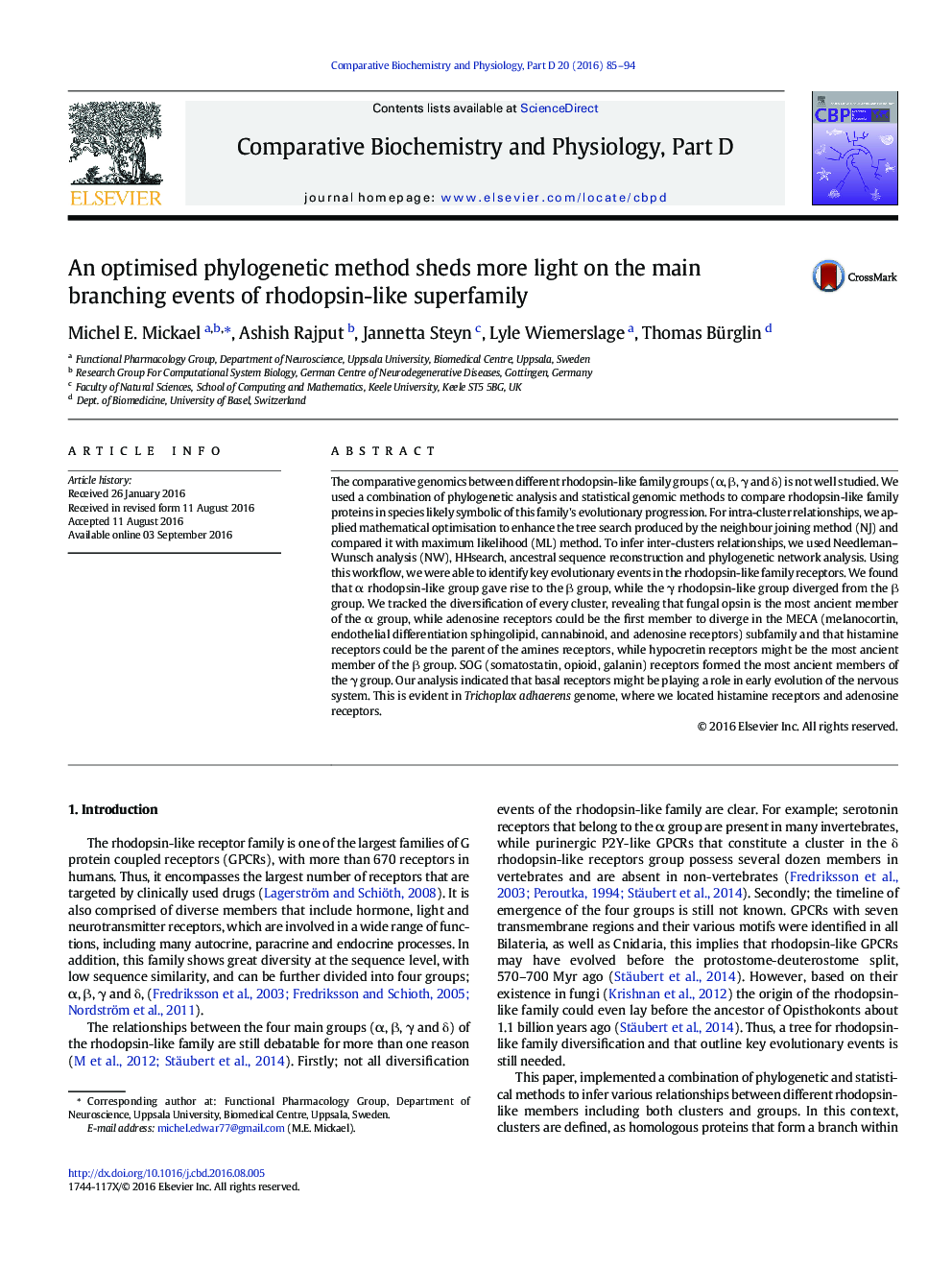| Article ID | Journal | Published Year | Pages | File Type |
|---|---|---|---|---|
| 8319281 | Comparative Biochemistry and Physiology Part D: Genomics and Proteomics | 2016 | 10 Pages |
Abstract
The comparative genomics between different rhodopsin-like family groups (α, β, γ and δ) is not well studied. We used a combination of phylogenetic analysis and statistical genomic methods to compare rhodopsin-like family proteins in species likely symbolic of this family's evolutionary progression. For intra-cluster relationships, we applied mathematical optimisation to enhance the tree search produced by the neighbour joining method (NJ) and compared it with maximum likelihood (ML) method. To infer inter-clusters relationships, we used Needleman-Wunsch analysis (NW), HHsearch, ancestral sequence reconstruction and phylogenetic network analysis. Using this workflow, we were able to identify key evolutionary events in the rhodopsin-like family receptors. We found that α rhodopsin-like group gave rise to the β group, while the γ rhodopsin-like group diverged from the β group. We tracked the diversification of every cluster, revealing that fungal opsin is the most ancient member of the α group, while adenosine receptors could be the first member to diverge in the MECA (melanocortin, endothelial differentiation sphingolipid, cannabinoid, and adenosine receptors) subfamily and that histamine receptors could be the parent of the amines receptors, while hypocretin receptors might be the most ancient member of the β group. SOG (somatostatin, opioid, galanin) receptors formed the most ancient members of the γ group. Our analysis indicated that basal receptors might be playing a role in early evolution of the nervous system. This is evident in Trichoplax adhaerens genome, where we located histamine receptors and adenosine receptors.
Related Topics
Life Sciences
Biochemistry, Genetics and Molecular Biology
Biochemistry
Authors
Michel E. Mickael, Ashish Rajput, Jannetta Steyn, Lyle Wiemerslage, Thomas Bürglin,
